Seven Samurai
9.3 /10 2 Votes
100% Rotten Tomatoes 99% Metacritic Genre Drama Country Japan | 8.7/10 IMDb 4/4 Roger Ebert Duration | |||||||||||||||||||||||||||||||||
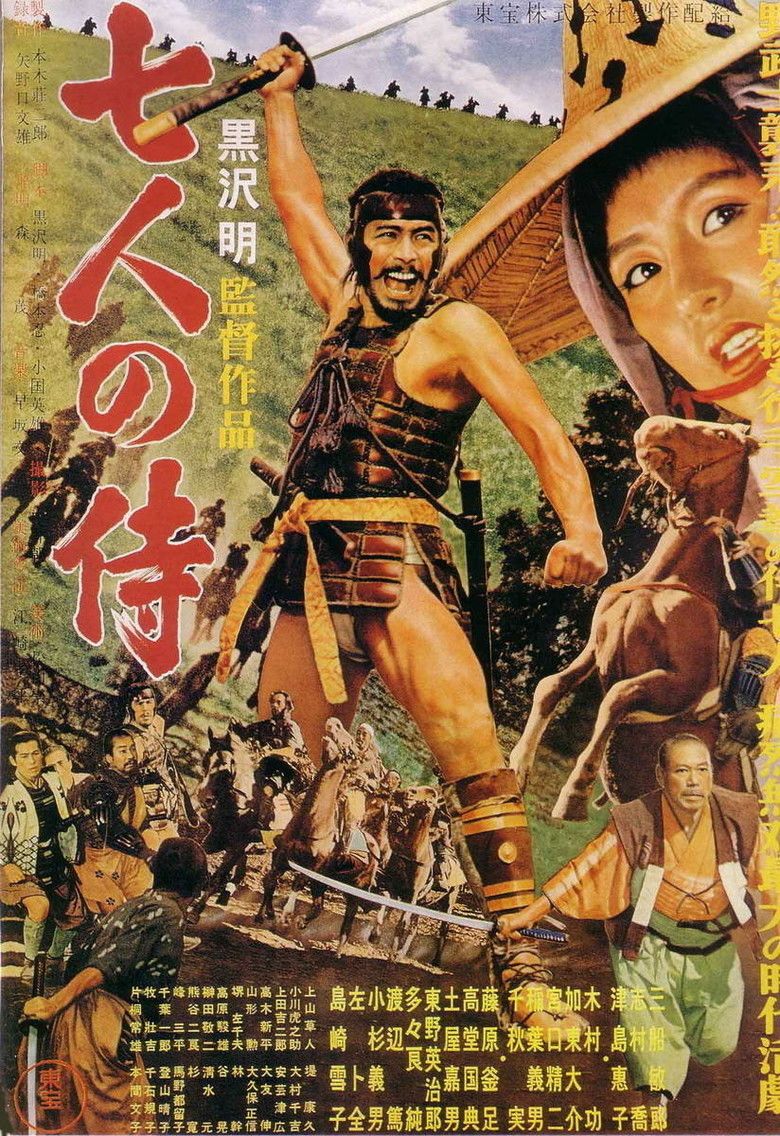 | ||||||||||||||||||||||||||||||||||
Release date April 26, 1954 (1954-04-26) Cast Toshir? Mifune (Kikuchiyo), (Kambei Shimada), (Gorobei Katayama), (Kyuzo), (Heihachi Hayashida), Daisuke Katô (Shichiroji)Similar movies 47 Ronin , Samurai III: Duel at Ganryu Island , Yojimbo , 13 Assassins , The Last Samurai , Harakiri Tagline Will Take Its Place With the Seven Greatest Films of All Time! | ||||||||||||||||||||||||||||||||||
Seven samurai 1954 original japanese theatrical trailer
Seven Samurai (七人の侍, Shichinin no Samurai) is a 1954 Japanese samurai adventure drama film co-written, edited, and directed by Akira Kurosawa. The story takes place in 1586 during the Sengoku Period of Japanese history. It follows the story of a village of farmers that hire seven ronin (masterless samurai) to combat bandits who will return after the harvest to steal their crops.
Contents
- Seven samurai 1954 original japanese theatrical trailer
- Part One
- Part Two
- The seven samurai
- Villagers
- Others
- Production
- Writing
- Set design
- Filming
- Editing
- Release
- Home media
- Reception
- Legacy
- Awards and nominations
- References

Since its release, Seven Samurai has consistently ranked highly in critics' lists of the greatest films, such as the BFI's Sight & Sound and Rotten Tomatoes polls. It has remained highly influential, often seen as one of the most "remade, reworked, referenced" films in cinema.
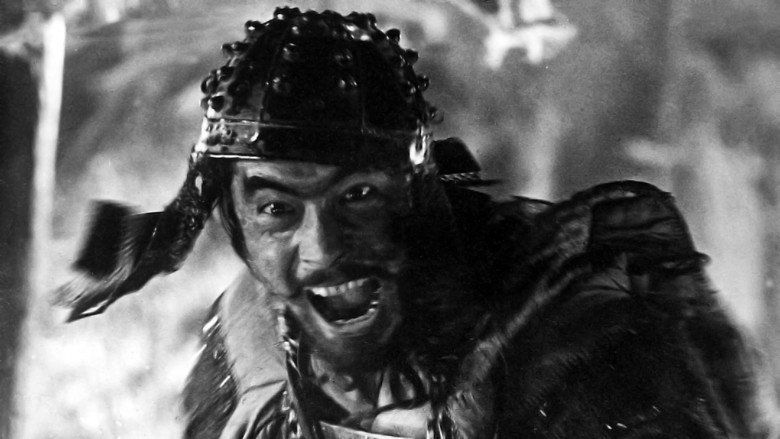
Part One
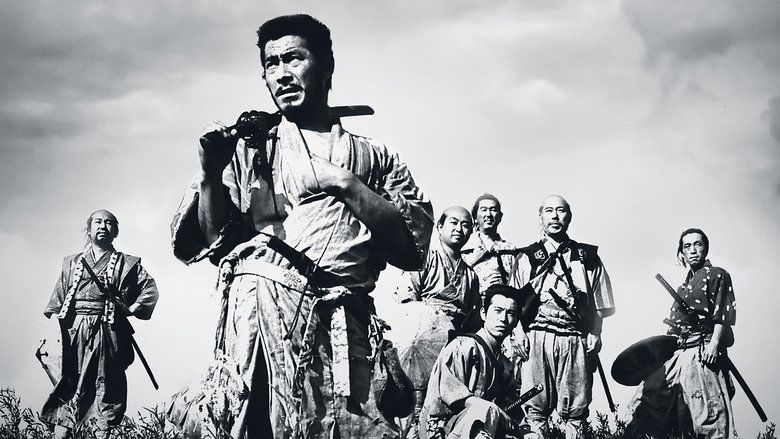
Bandits approach a mountain village, but their chief decides to spare it until after the harvest because they had raided it before. The plan is overheard by a farmer. Three farmers ask Gisaku, the village elder and miller, for advice. He declares they should hire samurai to defend the village. Since they have no money, Gisaku tells them to find hungry samurai.

After little success, the group watch Kambei, an aging but experienced rōnin, rescue a young boy who had been taken hostage by a thief. A young samurai named Katsushirō asks to become Kambei's disciple. The villagers then ask for help, and after initial reluctance, Kambei agrees. He recruits old friend Shichirōji and, with Katsushirō's assistance, three other samurai: the friendly, wily Gorobei; the good-willed Heihachi; and Kyūzō, a taciturn master swordsman whom Katsushirō regards with awe. Although inexperienced, Katsushirō is selected because time is short. Kikuchiyo, a man who carries a family scroll that he claims makes him a samurai, follows the group despite attempts to drive him away.

On arrival, the samurai find the villagers cowering in their homes, refusing to greet them. Feeling insulted by such a cold reception, Kikuchiyo rings the village alarm bell, prompting the villagers to come out of hiding. The samurai are both pleased and amused by this, and accept him as a comrade-in-arms. Slowly the samurai and farmers begin to trust each other as they train together. Katsushirō forms a relationship with Shino, a farmer's daughter, who had been masquerading as a boy for protection from the supposedly lustful samurai. However, the six samurai are angered when Kikuchiyo brings them armor and weapons, which the villagers most likely acquired by killing injured or dying samurai. Kikuchiyo retorts that samurai are responsible for battles, raids, taxation and forced labor that devastate the villagers' lives. By so doing, he reveals his origin as an orphaned farmer's son. The samurais' anger turns to shame.
Part Two
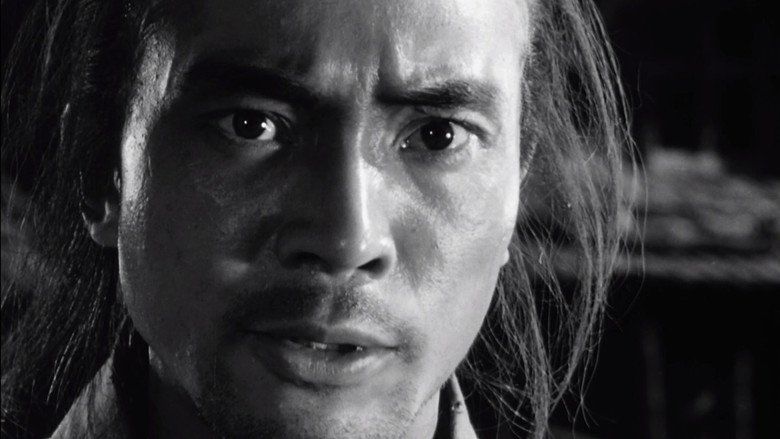
Three bandit scouts are spotted. Two are killed, while another reveals the location of their camp. Against the wishes of the samurai, the villagers kill the prisoner. The samurai burn down the bandits' camp in a pre-emptive strike. Rikichi, a troubled villager who helps the samurai, breaks down when he sees his wife, who had apparently been kidnapped and made a concubine in a previous raid. On seeing Rikichi, she walks back into her burning hut. Heihachi is killed trying to save Rikichi, whose grief is compounded.
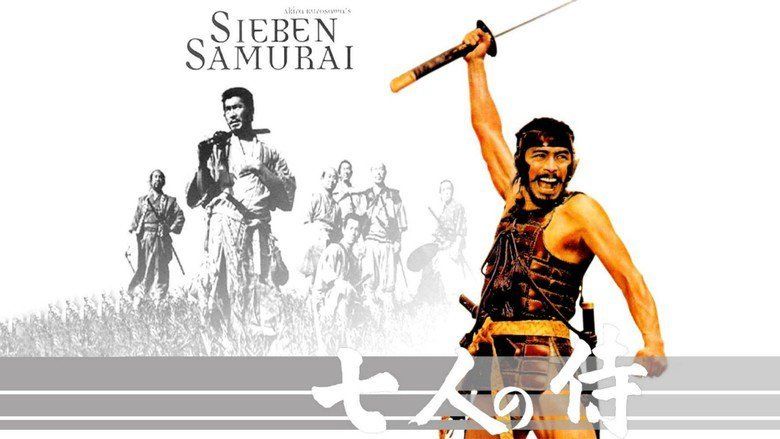
When the bandits finally attack, they are confounded by new fortifications, including a moat and wooden fence. Several bandits are killed according to Kambei's plan. As the bandits enter the village singly, they are hunted down and killed by groups of farmers armed with bamboo spears. Gisaku refuses to abandon his mill on the outskirts of the village and perishes with his family, who tried to save him. A lone baby is rescued by Kikuchiyo, who breaks down in tears, as it reminds him of his own childhood.
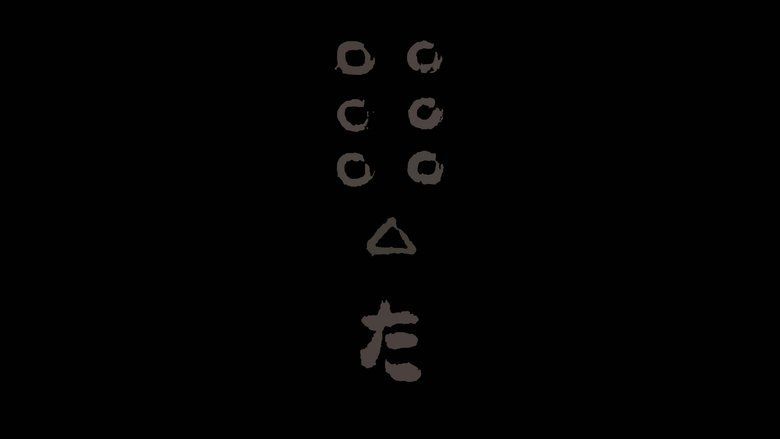
The bandits possess three Japanese matchlock firearms. Kyūzō ventures out alone and returns with one. An envious Kikuchiyo abandons his post—and his contingent of farmers—to bring back another. He is chastised by Kambei because, while he was gone, the bandits killed some of his farmers. The bandit chief attacks again, and Gorobei is slain. That night, Kambei predicts that, due to their dwindling numbers, the bandits will make one last all-out attack. Meanwhile, Katsushirō and Shino's relationship is discovered by her father. He hits her until Kambei and the villagers intervene. Shichirōji calms everyone down by saying the couple should be forgiven because they are young and that before any battle, passions can run high.
The next morning in a torrential downpour, Kambei orders that the remaining thirteen bandits be allowed into the village. As the battle winds down, their leader, armed with a gun, enters the women's hut, from where he shoots Kyūzō. An enraged Kikuchiyo charges the hut; he is shot, but kills the bandit chief before dying.
The three surviving samurai watch as the joyful villagers sing while planting their crops. Kambei—standing beneath the funeral mounds of his four dead comrades—reflects that it is another pyrrhic victory for the samurai: "In the end we lost this battle too. The victory belongs to the farmers, not to us."
The seven samurai
Villagers
Others
Production
The film was the first samurai film that Akira Kurosawa directed. He had originally wanted to direct a film about a single day in the life of a samurai, but later discovered a story about samurai defending farmers in his research. According to actor Toshiro Mifune, the film was originally going to be called Six Samurai, with Mifune playing the role of Kyuzo. During the six-week scriptwriting process, Kurosawa and his screenwriters realized that "six sober samurai were a bore—they needed a character that was more off-the-wall". Kurosawa recast Mifune as Kikuchiyo and gave him creative license to improvise actions in his performance.
The film took a year to complete. It had become a topic of wide discussion long before it was released. After three months of pre-production the film had 148 shooting days spread out over a year—four times the span covered in the original budget, which eventually came to almost half a million dollars. Toho Studios closed down production at least twice. Each time, Kurosawa calmly went fishing, reasoning that the studio had already heavily invested in the production and would allow him to complete the picture. The film's final battle scene, originally scheduled to be shot at the end of summer, was shot in February in near-freezing temperatures. Mifune later recalled that he had never been so cold in his life.
Writing
Kurosawa and the writers were innovative in refining the theme of the assembly of heroic characters to perform a mission. According to Michael Jeck's DVD commentary, Seven Samurai was among the first films to use the now-common plot element of the recruiting and gathering of heroes into a team to accomplish a specific goal, a device used in later films such as The Guns of Navarone, Sholay, the western remake The Magnificent Seven, and Pixar's animated film A Bug's Life. Film critic Roger Ebert speculates in his review that the sequence introducing the leader Kambei (in which the samurai shaves off his topknot, a sign of honor among samurai, in order to pose as a monk to rescue a boy from a kidnapper) could be the origin of the practice, now common in action movies, of introducing the main hero with an undertaking unrelated to the main plot. Other plot devices such as the reluctant hero, romance between a local woman and the youngest hero, and the nervousness of the common citizenry had appeared in other films before this but were combined in this film.
Set design
Kurosawa refused to shoot the peasant village at Toho Studios and had a complete set constructed at Tagata on the Izu Peninsula, Shizuoka. Although the studio protested the increased production costs, Kurosawa was adamant that "the quality of the set influences the quality of the actors' performances... For this reason, I have the sets made exactly like the real thing. It restricts the shooting but encourages that feeling of authenticity. He also spoke of 'intense labour' of making the film: "It rained all the time, we didn't have enough horses. It was just the kind of picture that is impossible to make in this country."
Filming
Through the creative freedom provided by the studio, Kurosawa made use of telephoto lenses, which were rare in 1954, as well as multiple cameras which allowed the action to fill the screen and place the audience right in the middle of it. "If I had filmed it in the traditional shot-by-shot method, there was no guarantee that any action could be repeated in exactly the same way twice." He found it to be very effective and he later used it in movies that were less action-oriented. His method was to put one camera in the most orthodox shooting position, another camera for quick shots and a third camera "as a kind of guerilla unit". This method made for very complicated shoots, for which Kurosawa choreographed the movement of all three cameras by using diagrams.
The martial arts choreography for the film was led by Yoshio Sugino of the Tenshin Shōden Katori Shintō-ryū. Initially Junzo Sasamori of the Ono-ha Itto-ryu was working along with Sugino, but he was asked by the Ministry of Education to teach in Europe during production.
Editing
Following the filming, Kurosawa quickly earned a reputation with his crew as the "world's greatest editor" because of his practice of editing late at night during the shooting. He described this as a practical necessity that is incomprehensible to most directors, who on major production spent at least several months with their editors assembling and cutting the film after shooting is completed.
Release
At three hours, twenty-seven minutes (207 minutes), Seven Samurai would be the longest picture of Kurosawa's career. Toho Studios originally cut fifty minutes off the film when screening it for American distributors for fear that no American audience would be willing to sit through the entire picture.
A 198-minute VHS copy was acquired by the British Film Institute in 1989, and a digitally restored version of 190 minutes was exhibited in the UK in 1991; it was the first film released for sale by the British Film Institute accompanied by a documentary, historical notes and biographies. A near-complete 203 minute version was re-released in the U.S. in 2002.
Home media
A Criterion Collection DVD version of the film was released containing the complete original version of the film (207 minutes) on one disc and a second Criterion DVD released in 2006 also contains the digitally remastered, complete film on two discs, as well as an additional disc of extra material. A region 4 DVD of the full 207 minute cut was released in 2004 by Madman Entertainment under its Eastern Eye label. A Blu-ray edition of the full length edition was released by the Criterion Collection on October 19, 2010.
Reception
Seven Samurai grossed 268 million yen in the first 12 months of its release. Eventually, it became Japan's third highest-grossing film of 1954. It once ranked fifth on Rotten Tomatoes's action/adventure voting list. It is also ranked number seven on Rotten Tomatoes' top 100 art house and international films.
In 1982, it was voted number three in the Sight & Sound critics' poll of greatest films. In the Sight & Sound directors' poll, it was voted at number ten in 1992 and number nine in 2002. It also ranked number seventeen on the 2012 Sight & Sound critics' poll, in both cases being tied with Kurosawa's own Rashomon (1950). Seven Samurai has also been ranked number one on Empire magazine's list of "The 100 Best Films of World Cinema" in 2010.
Kurosawa both directed and edited many of his films, including Seven Samurai. In 2012, the Motion Picture Editors Guild listed Seven Samurai as the 33rd best-edited film of all time based on a survey of its members.
On the review aggregator website Rotten Tomatoes, the film holds a perfect approval rating of 100% based on 57 reviews, with an average rating of 9.3/10. The site's critical consensus reads: "Arguably Akira Kurosawa's masterpiece, The Seven Samurai is an epic adventure classic with an engrossing story, memorable characters, and stunning action sequences that make it one of the most influential films ever made.
Legacy
Seven Samurai was a technical and creative watershed that became Japan's highest-grossing movie and set a new standard for the industry. Its influence can be most strongly felt in the western The Magnificent Seven (1960), a film specifically adapted from Seven Samurai. Director John Sturges took Seven Samurai and adapted it to the Old West, with the samurai replaced by gunslingers. Many of The Magnificent Seven's scenes mirror those of Seven Samurai.
However, in interview with R. B. Gadi, Kurosawa expressed how "the American copy of The Magnificent Seven is a disappointment, although entertaining. It is not a version of Seven Samurai". Stephen Prince argues that considering Samurai films and Westerns respond to different cultures and contexts, what Kurosawa found useful was not their content but rather he was inspired by their levels of syntactic movement, framing, form and grammar.
Battle Beyond the Stars is an American 1980 science fiction film directed by Jimmy T. Murakami and produced by Roger Corman. The film, intended as a "Magnificent Seven in outer space", is based on the plots of The Magnificent Seven and Seven Samurai. The movie acknowledges its debt to Seven Samurai by calling the protagonist's homeworld Akir and its inhabitants the Akira.
The anime series Samurai 7 is a science fiction version of Seven Samurai.
Director Zack Snyder revealed the film to be an influence on the upcoming Justice League film.
Some film critics have noted similarities between Pixar's A Bug's Life and Seven Samurai.
Awards and nominations
References
Seven Samurai WikipediaSeven Samurai IMDbSeven Samurai Rotten TomatoesSeven Samurai Roger EbertSeven Samurai MetacriticSeven Samurai themoviedb.org
